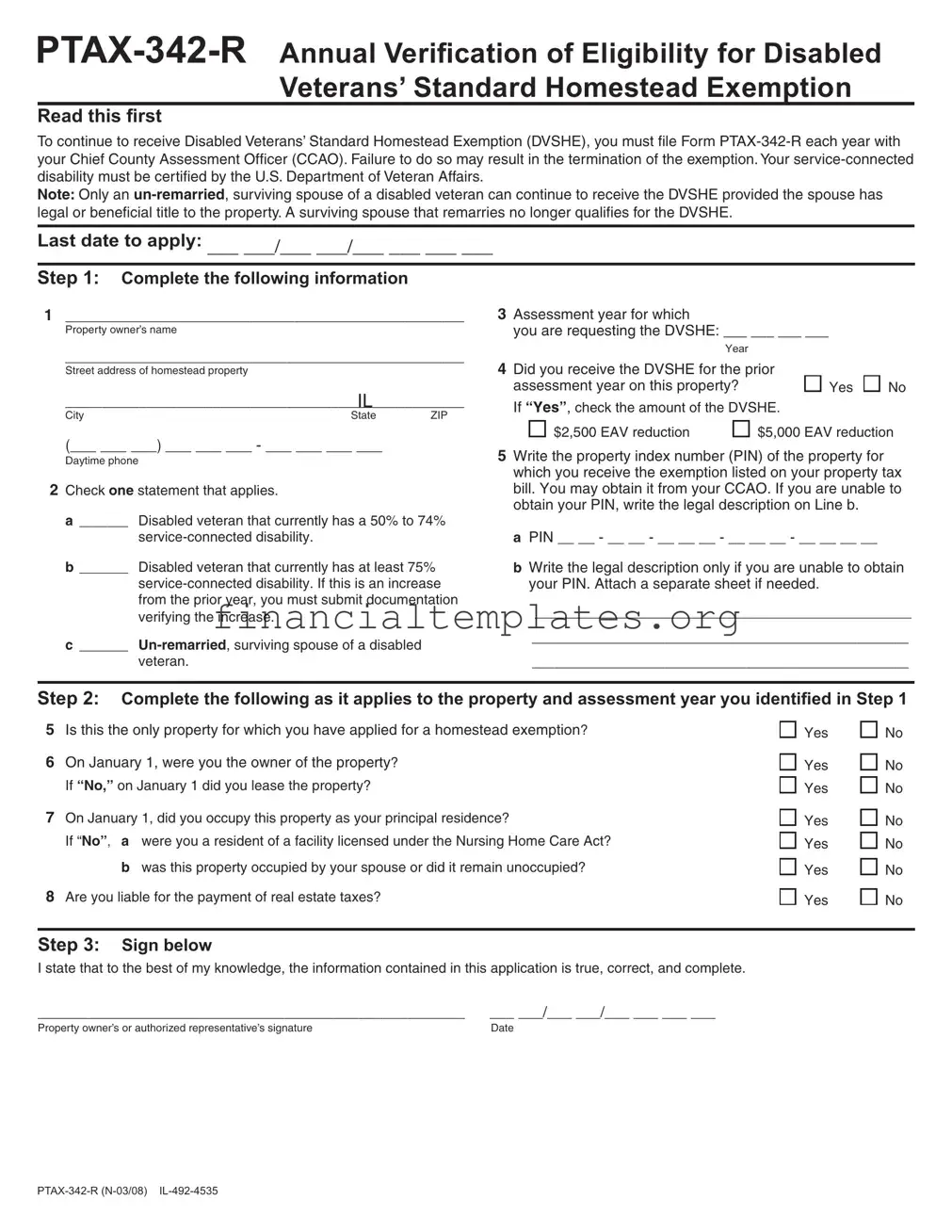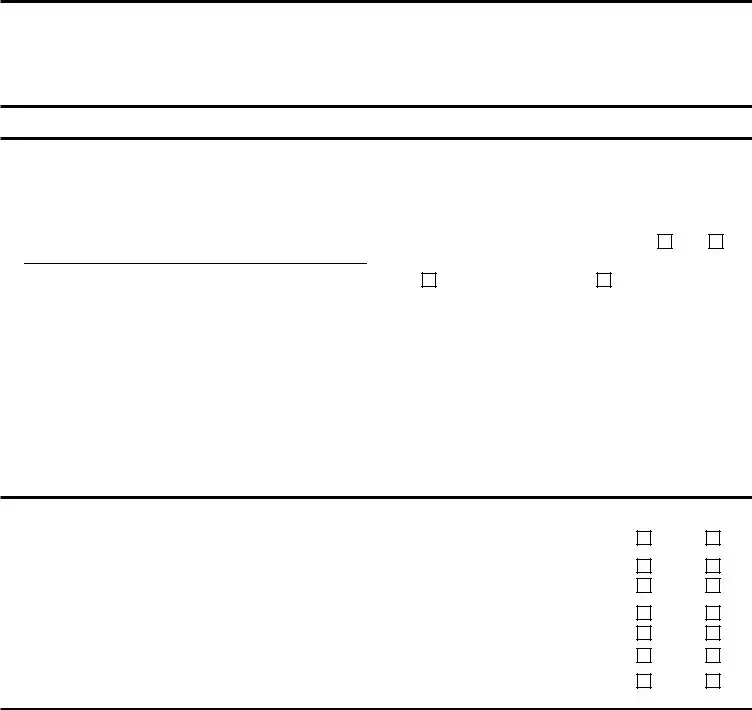The PTAX-342-R form, which serves as the annual verification for continuing eligibility for the Disabled Veterans’ Standard Homestead Exemption in Illinois, shares similarities with several other documents designed to determine eligibility and benefits for tax exemptions, especially those targeting veterans and disabled individuals. Here, we explore eight comparable documents, shedding light on their purpose, requirements, and the audiences they serve.
Firstly, the PTAX-341, Application for Disabled Veterans' Homestead Exemption, closely resembles the PTAX-342-R. While the latter verifies ongoing eligibility, PTAX-341 is used initially to apply for the Disabled Veterans’ Homestead Exemption, requiring similar information such as service-connected disability certification by the U.S. Department of Veterans Affairs. Both forms seek to reduce property tax liabilities for disabled veterans, differing primarily in their application timing.
Secondly, the Senior Citizens Homestead Exemption application also mirrors the PTAX-342-R in function but serves a different demographic. Aimed at senior citizens over the age of 65 seeking property tax relief, this form assesses eligibility based on age, residence, and ownership, similar to how PTAX-342-R assesses eligibility based on disability and veteran status.
Another similar document is the Application for Homestead Exemption for Persons with Disabilities, which, like the PTAX-342-R, offers property tax relief but focuses on individuals with disabilities, regardless of veteran status. Applicants must prove their disability status alongside property ownership and occupancy, mirroring the requirements for disabled veterans but with a broader eligibility criteria.
The General Homestead Exemption application also shares similarities with the PTAX-342-R by offering property tax reductions to eligible homeowners. However, this exemption is more universally available, requiring only proof of residence and ownership, making it less specific than the disability or veteran-focused exemptions.
The Disabled Veterans’ Adapted Housing Exemption stands as another parallel form, designed specifically for veterans with disabilities requiring specially adapted housing. This document, while similar in intent to the PTAX-342-R, focuses on a narrower group of applicants, offering significant property tax relief tailored to their unique housing needs.
The Application for the Returning Veterans' Homestead Exemption echoes the PTAX-342-R by targeting veterans, granting a one-time tax relief for veterans returning from active duty. While it caters to a different phase in a veteran's life, it shares the core aim of providing financial relief through tax exemptions.
Moving to the Surviving Spouse Tax Abatement form, this document parallels the PTAX-342-R's provisions for un-remarried surviving spouses of disabled veterans. It extends property tax benefits to surviving spouses, acknowledging their shared sacrifice, and maintaining a connection through the eligibility criteria.
Lastly, the Home Improvement Exemption application, while not veteran-specific, offers tax relief for property improvements, reflecting the PTAX-342-R's spirit of reducing financial burdens on homeowners. This form encourages property enhancement by minimizing the tax impact of improvements, indirectly benefiting veterans and other homeowners alike.
In essence, these documents, although varied in their target beneficiaries and specific requirements, share a unifying purpose with the PTAX-342-R: to provide tax relief and recognize the contributions, needs, or circumstances of distinct groups within the community, from veterans and their families to seniors and individuals with disabilities.


